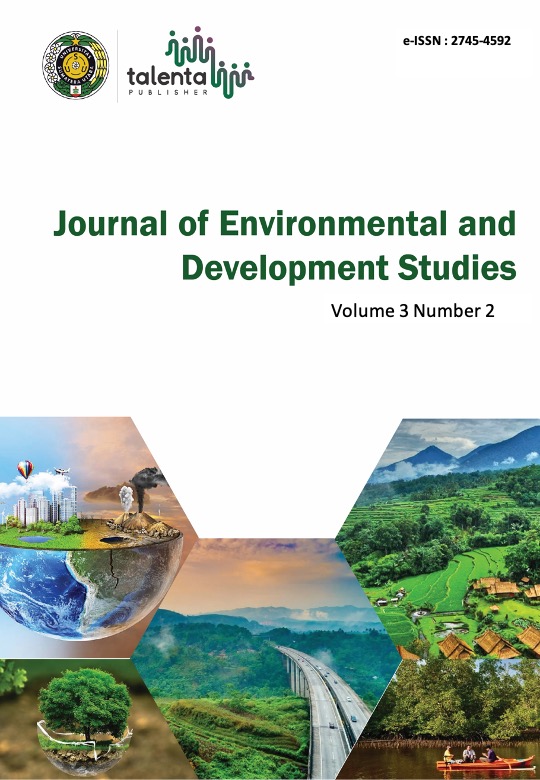Analysis of the Function of Forest Area in Spatial Planning of the North Tapanuli Regency
DOI:
https://doi.org/10.32734/jeds.v3i2.8527Keywords:
Spatial pattern, forest area, Tapanuli Utara Regency, biophysics condition, GISAbstract
Spatial pattern planning of a certain area includes protected area and cultivated area allocation, based on the principle of the use of natural resources and environmental preservation for sustainable development. Included in the spatial pattern are forest areas designated by the Minister. The Objective of the research is to analyze 1) the function of feasible forest area in Tapanuli Utara Regency viewed from its biophysics, 2) the land cover in Tapanuli Utara Regency from 2014 to 2020 and 3) the forest area in Tapanuli Utara Regency which is still preserved as Fores Area or could be changed to be a non-forest area. The research uses descriptive qualitative method. The data are processed and analyzed by using overlapping method on biophysical data, existing condition, and other thematic data, using GIS (Geographic Information System). The Result of the analysis of the function of forest area in Tapanuli Utara Regency shows that the fungtion of its forest area of 198.002 hectares consisted of 1) Nature Reserve Area is 2.011 hectares, 2) Protected Forest area is 49.772 hectares, 3) Limited Production Forest Area is 69.093 hectares, and Production Forest Area is 77.126 hectares
Downloads
Downloads
Published
Issue
Section
License
Copyright (c) 2022 Journal of Environmental and Development Studies

This work is licensed under a Creative Commons Attribution-ShareAlike 4.0 International License.














